Local people have just discovered a new cave in Diu Do village, Truong Son commune, Quang Ninh district, Quang Binh province.
After being discovered, the local government and the travel company organized a survey to make an overall assessment and explore further. The cave is about 7 km from the center of Truong Son commune, the road to the cave entrance is convenient. People temporarily call this new cave "Son Nu cave". The cave is 1.5 km long, the cave entrance is 30 m high, inside the cave there is an underground river originating from the Vietnam - Laos border, passing through Doc May village and flowing through Son Nu cave.
However, the photos taken inside the cave made many people angry, when the survey team climbed up the stalactite carpet to take pictures of all different poses, standing and sitting...
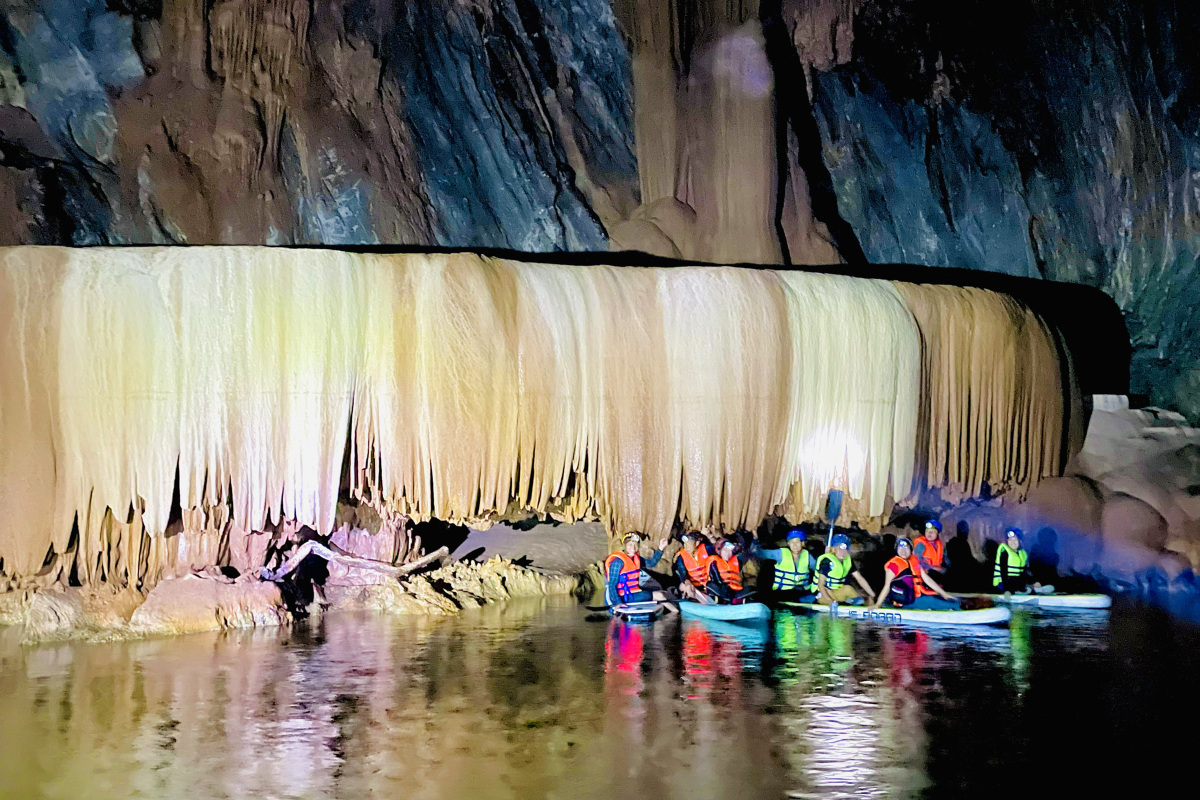
The magnificent stalactite curtain inside Son Nu cave
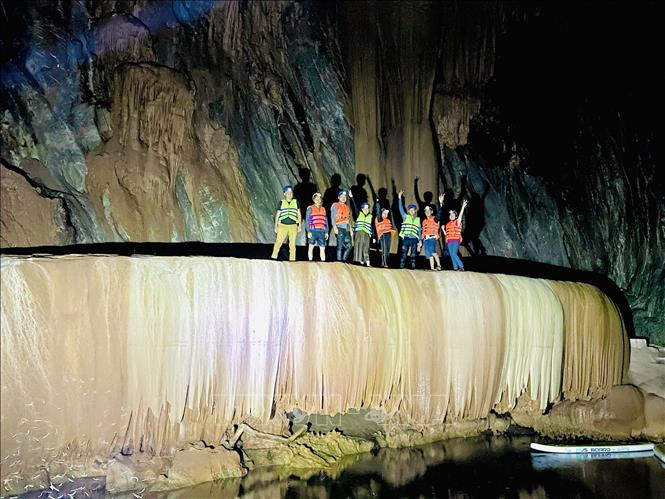
But the survey team climbed up to stand.
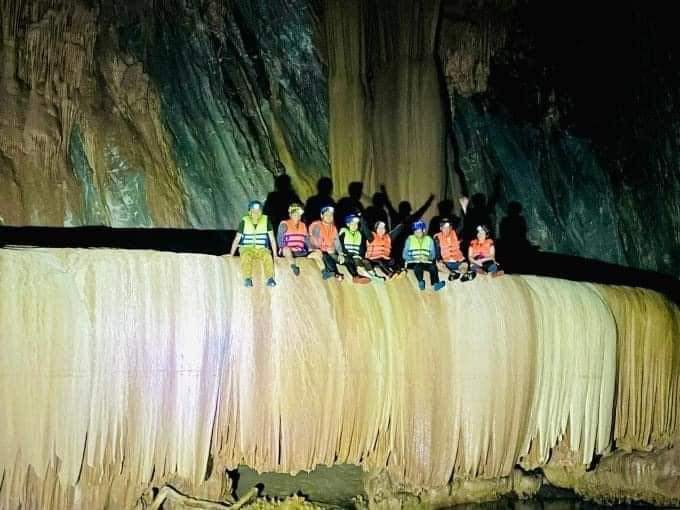
And sit to take pictures
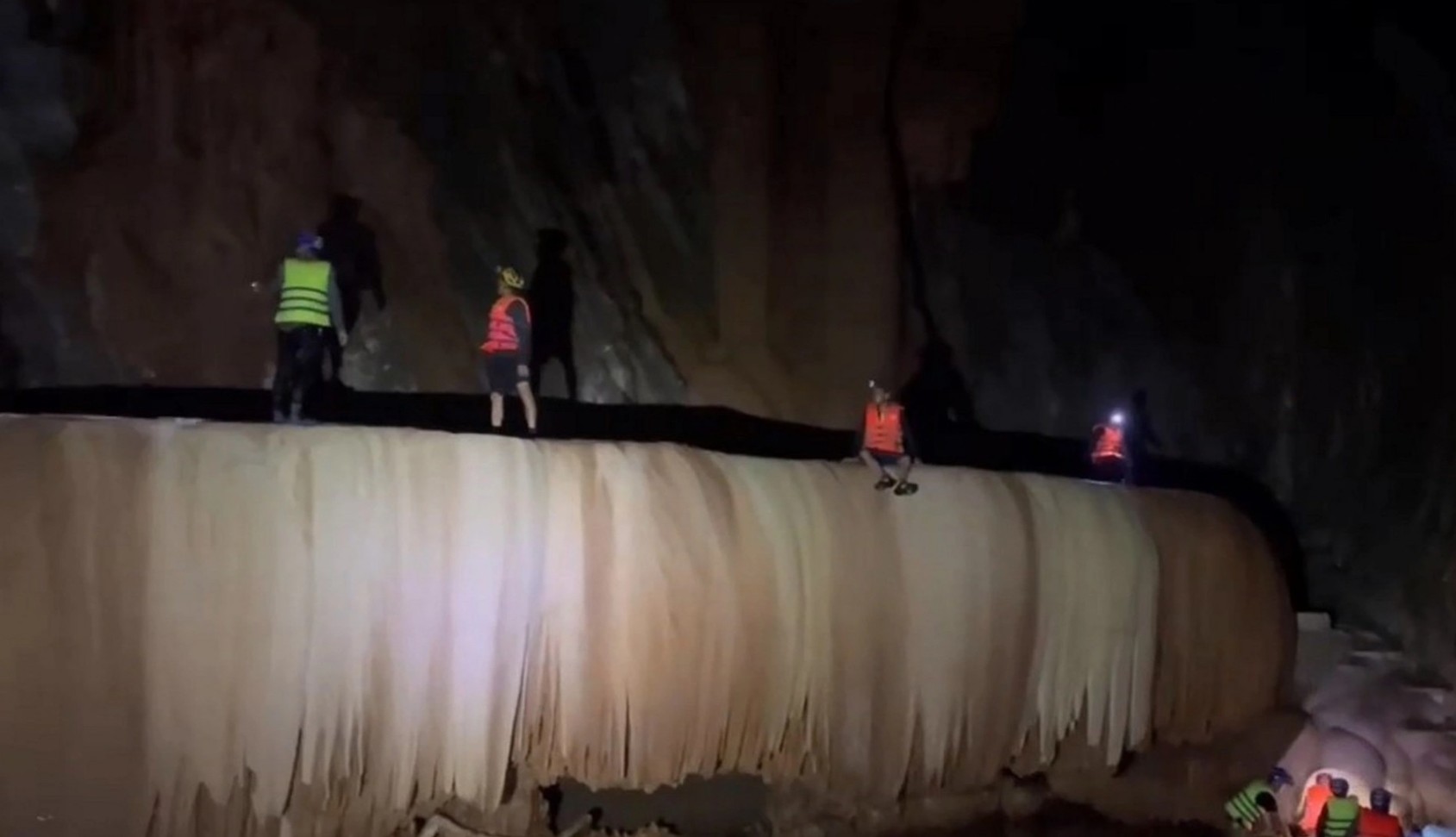
Many people walk around on the stalactites
Professor - Dr. Ta Hoa Phuong, Chairman of the Vietnam Paleontology - Stratigraphy Association, said that Son Nu is a beautiful karst cave with many attractive cave landscapes. However, when looking at the photos of groups of people climbing and sitting on stalactites in the cave, Professor Phuong exclaimed: "It is true that the survey team, although well-equipped, did not work professionally. They trampled, sat, and stood on beautiful stalactites, the main objects that need to be protected in a karst cave serving tourism. Without stalactites, the cave becomes much less attractive."
According to this professor of geology, the stalactites in the trampled cave in the photos taken are flowstones, rimstones, with beautiful and strange shapes (spillway shapes, waterfalls, millstone-shaped corals...), they are in the process of development (evidence is that there are still sparkling calcite crystals being formed). These stalactite formations are very sensitive to human impact, especially when trampled or directly contacted.
"If tourists are allowed to freely walk and climb on stalactites like this, it will cause harm, hinder their normal development, leading to degradation, erosion, and loss of the fresh, vibrant look of an active cave. The scene of climbing on stalactites like this shows that the group of young people have not been fully equipped with knowledge about cave conservation and towards sustainable tourism development. I think that recording such photos and making them public really has an offensive effect," emphasized Professor - Dr. Phuong.
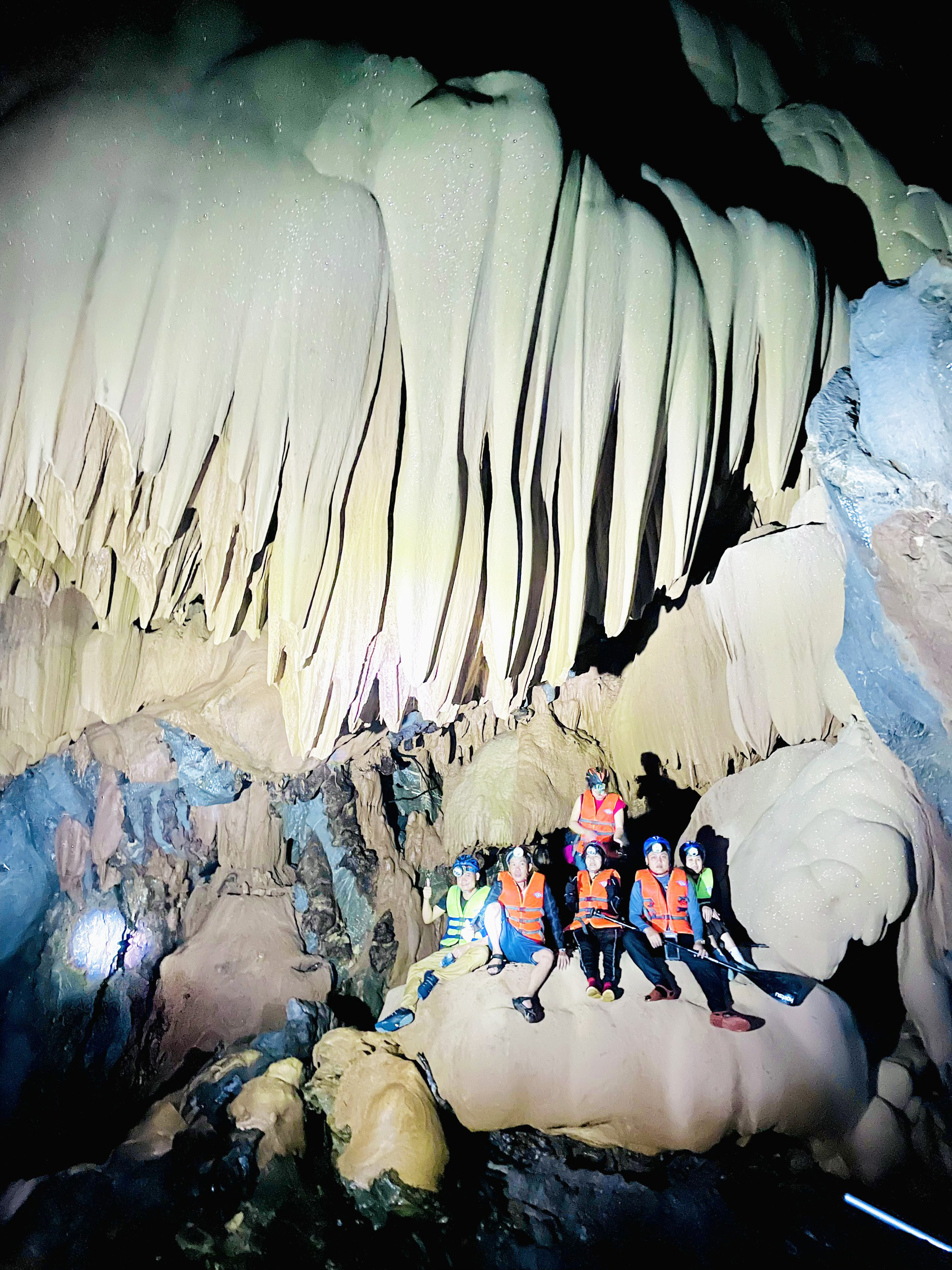
In another photo, the group sat on a stalactite to take photos.
Sharing the same opinion with Professor Phuong, a cave expert in Vietnam also said that the stalactites in Son Nu cave are in the process of forming. Therefore, walking or rubbing will wear away/wash away the calcium layer that sticks to the surface, which takes a long time to form. In addition, human sweat has oil, so when touching the stalactites, the oil will stick to the surface, preventing the calcium from sticking.
In caves exploited for tourism around the world as well as in Vietnam, places with stalactites will be roped off to limit encroachment. "Sitting and standing on stalactites to take pictures in the photos in Son Nu cave is an intentional act," he said.
Caves are always exploited for tourism carefully. Caves that are too sensitive will be closed and not exploited. Caves that can receive visitors will be exploited in a reasonable and limited number. For example, Son Doong cave is limited to 2,500 visitors/year, Tu Lan is limited to 550 visitors...
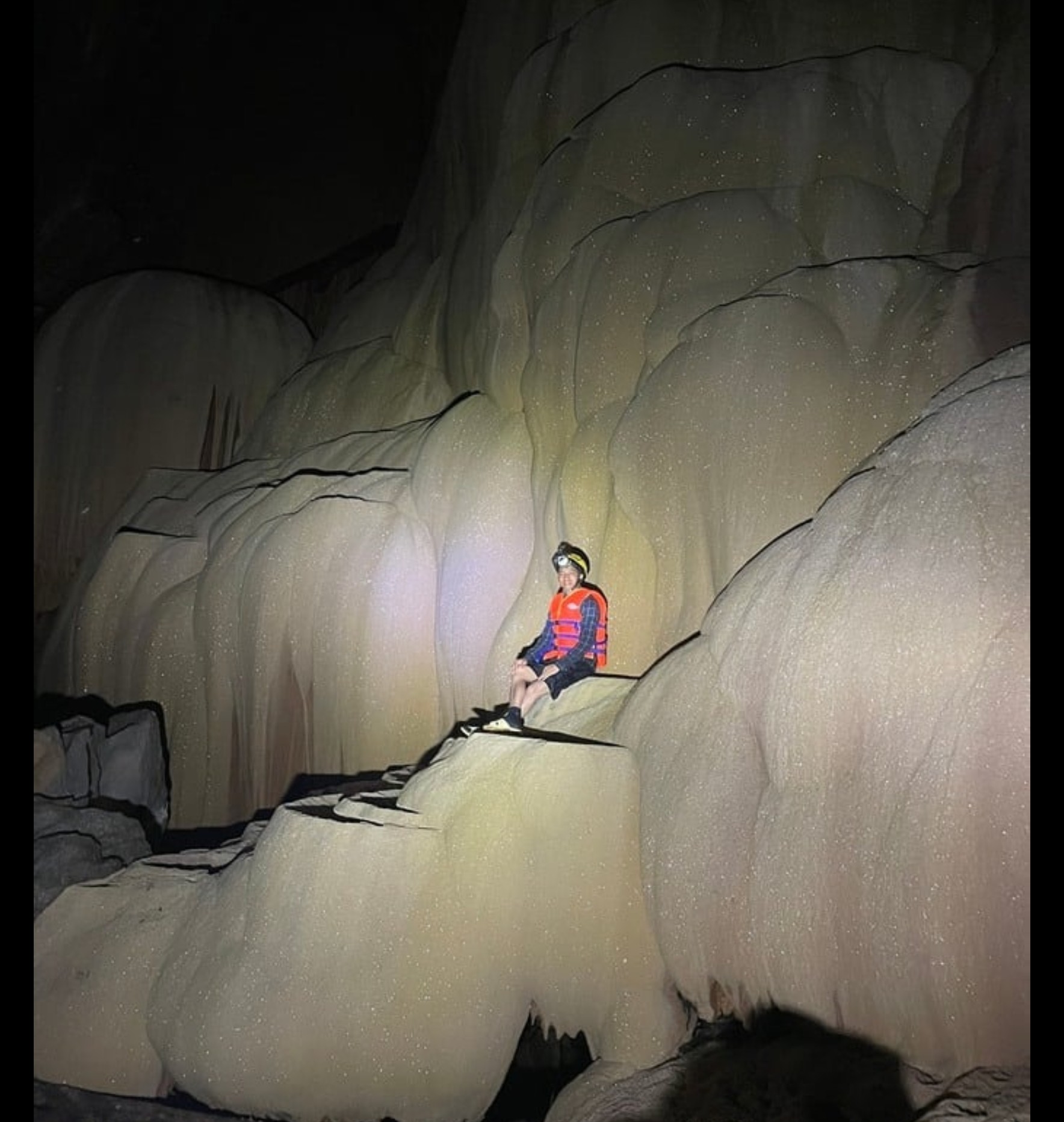
Giant stalactite block in Son Nu cave
Speaking to Thanh Nien , Mr. Nguyen Van Tuan, Director of Truong Tuan Tourism Company (based in Truong Son Commune, Quang Ninh District, Quang Binh Province), the unit that organized the survey of Son Nu Cave last July, admitted that the people in the photos standing and sitting on the stalactites were employees and acquaintances of the company. The company has made a project to request the local government's approval to exploit Son Nu Cave for tourism in the near future.
Source link






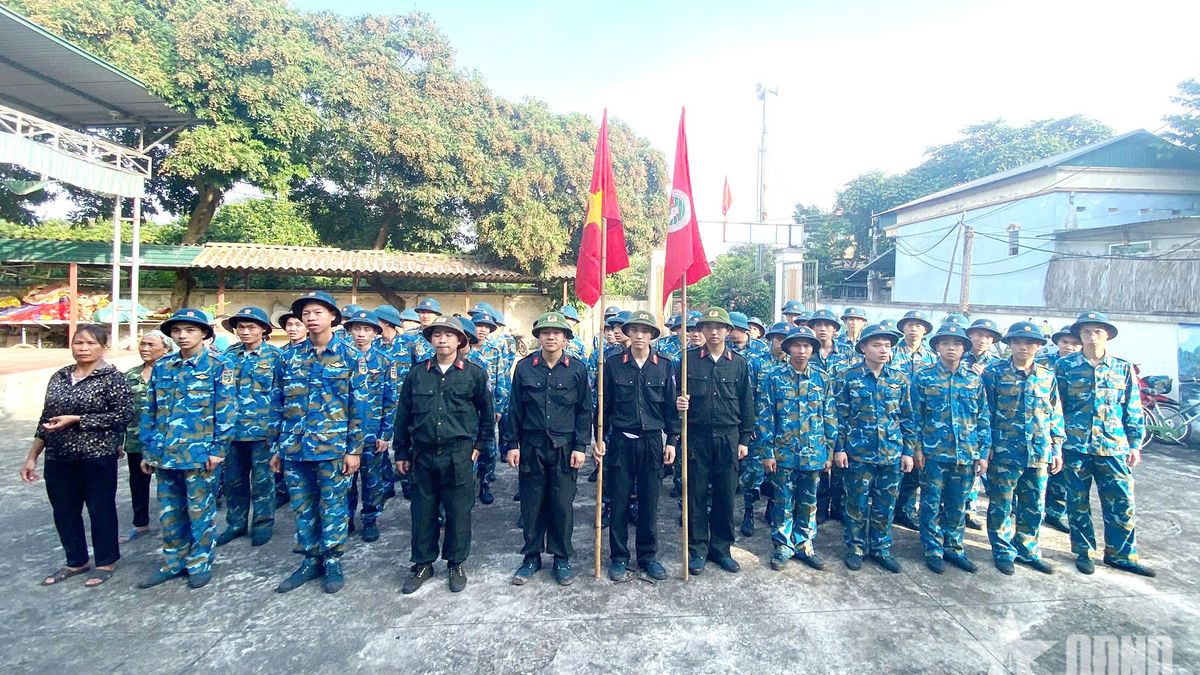

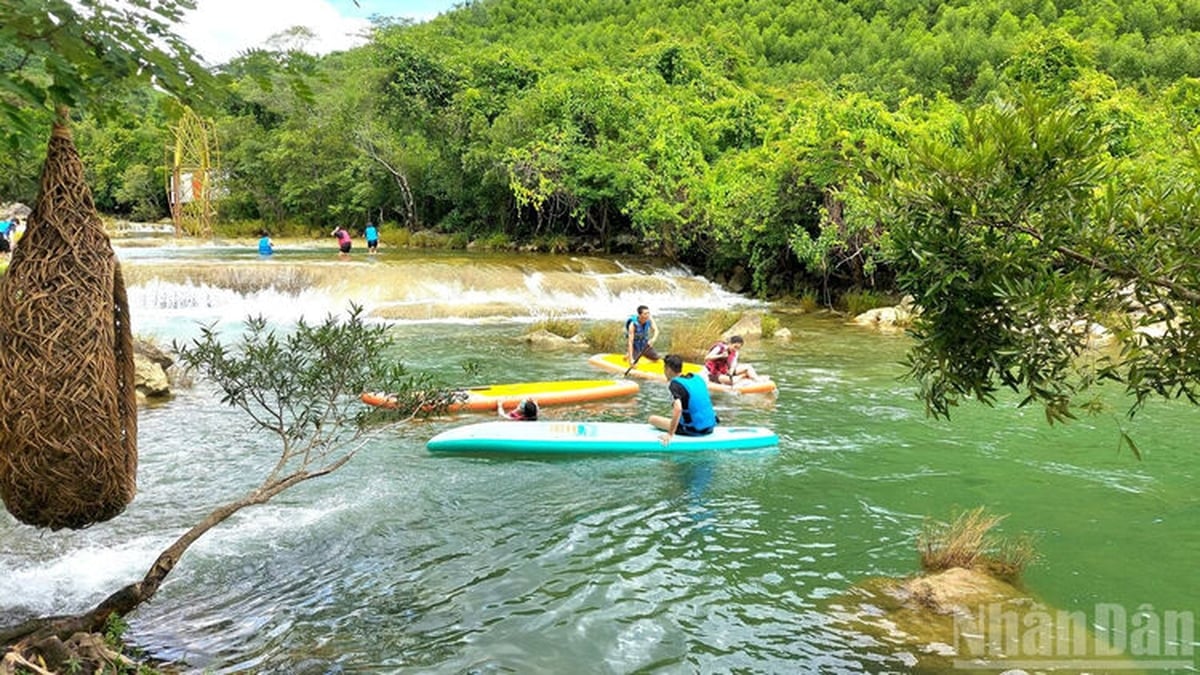


















































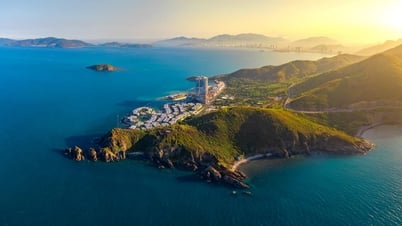











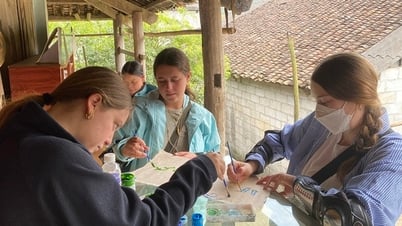



























Comment (0)